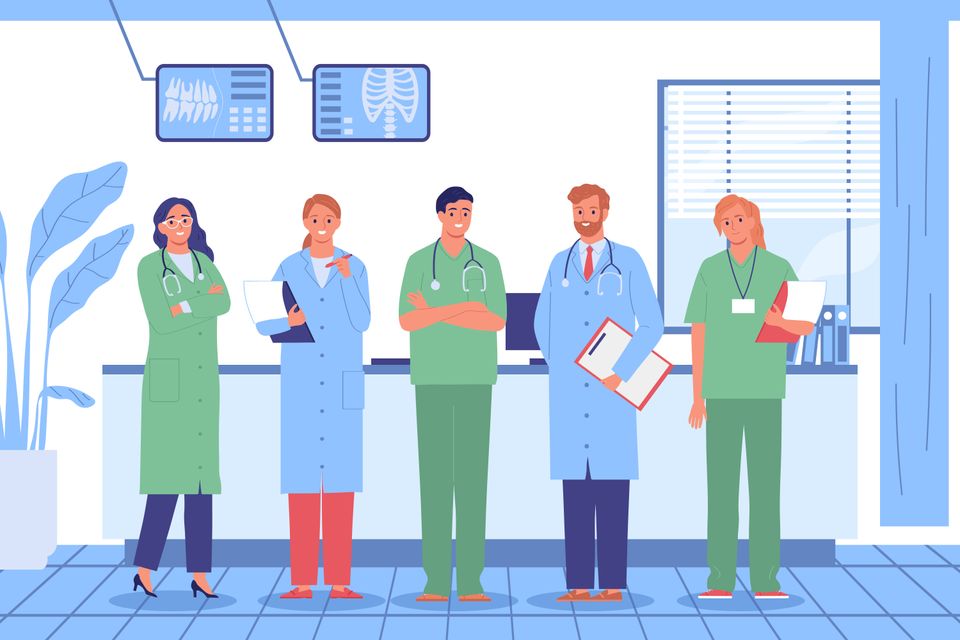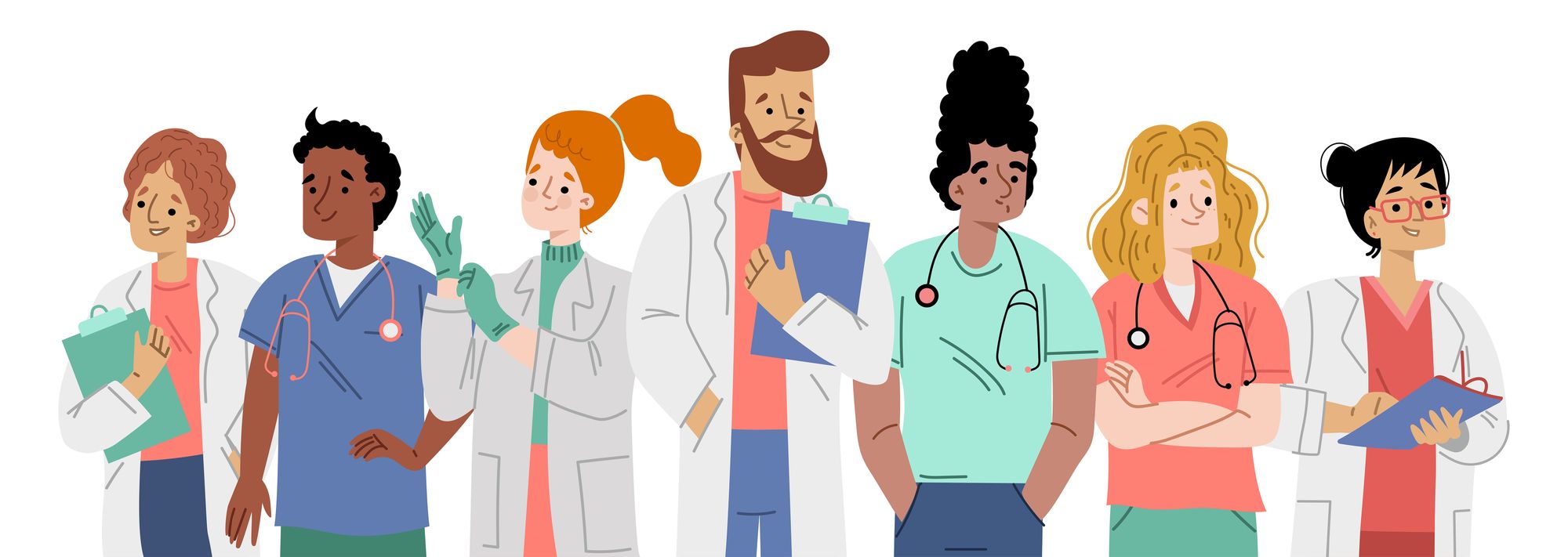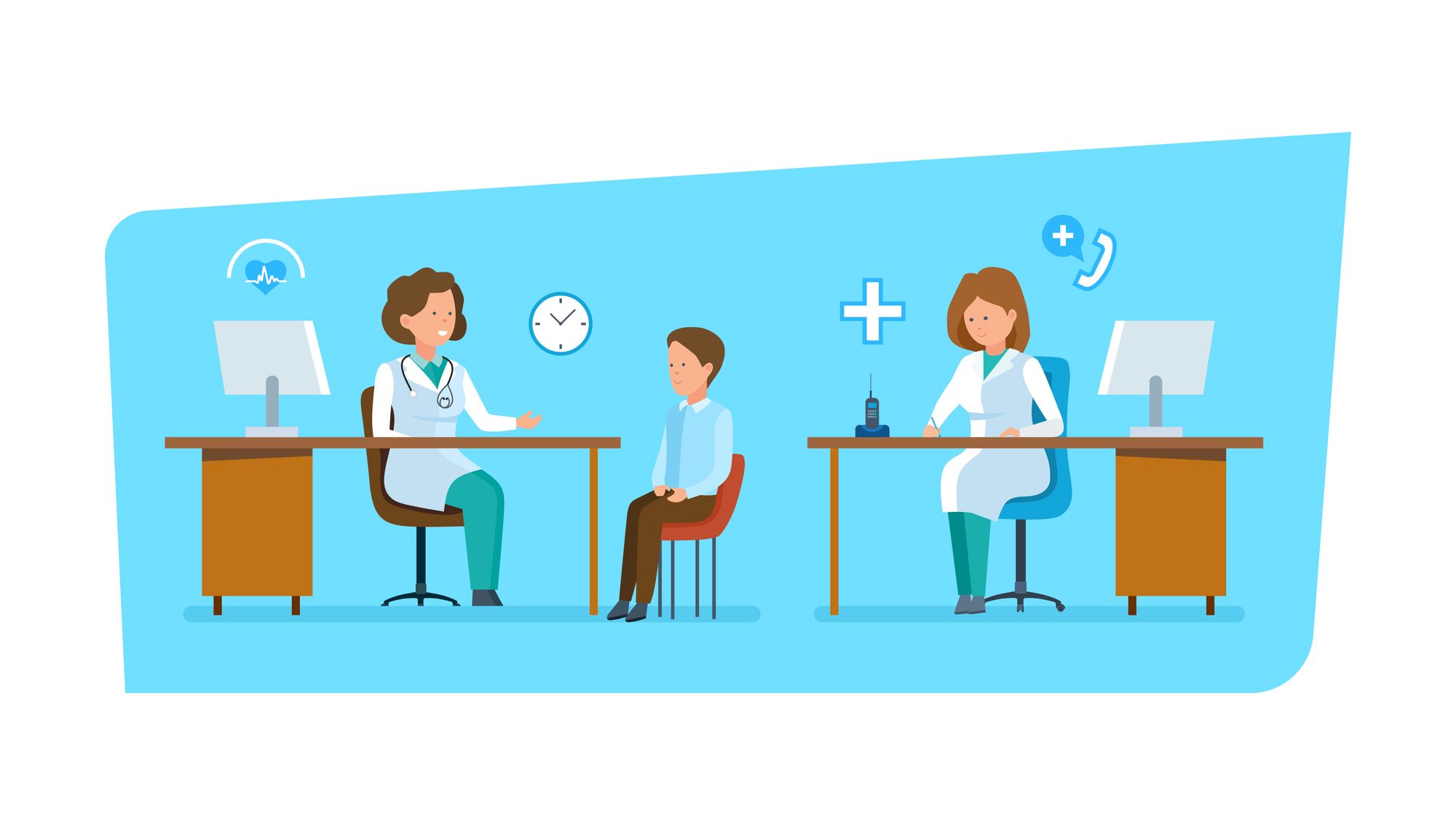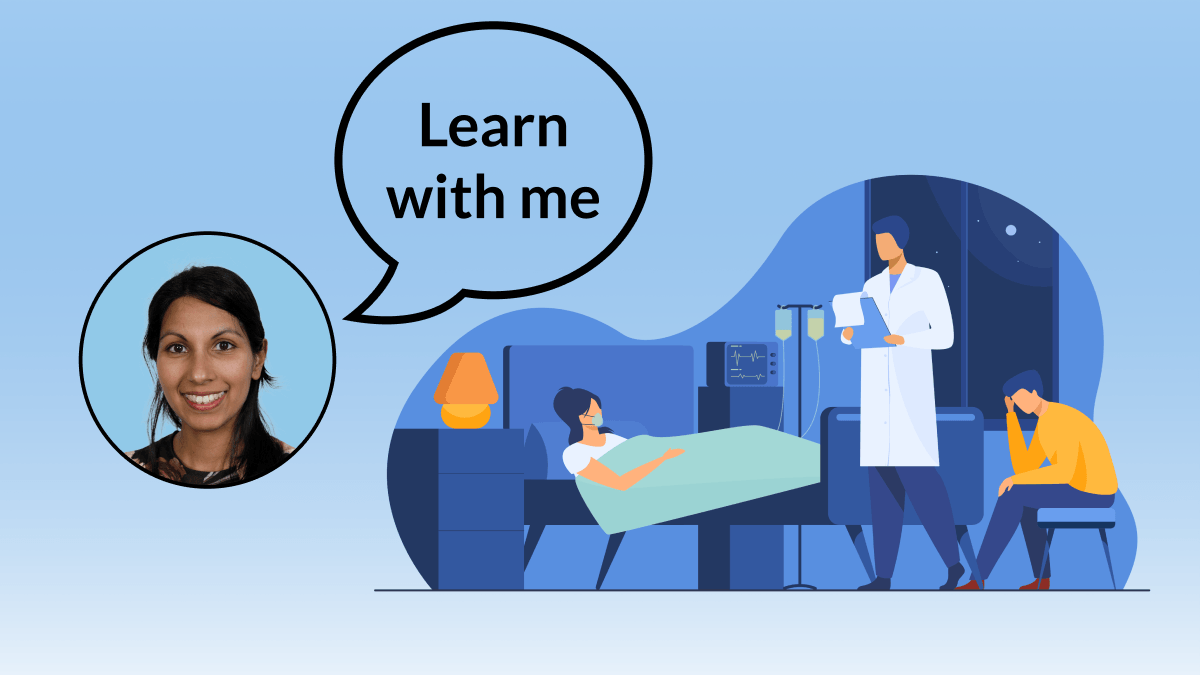How to Impress Your Clinical Supervisor & Maximise Placement Opportunities

I still remember what it was like going to my first day on a new clinical placement as a medical student. It was VERY daunting. Every new environment had its own quirks and intricacies. Some placements would be well organised whilst others lacked structure. As time went on, I got better at navigating new wards and different teams. This blog is dedicated to sharing tips on making the most of your clinical placements, impressing your clinical supervisor, and gaining confidence in your role.
As a junior doctor, I supervised many medical students during their secondary care placements. I noticed a disparity in their attitudes; while some were eager to seize every opportunity, others preferred a more laid-back approach, sometimes leaving the ward as soon as possible. Often, I felt this was due to a lack of confidence in ASKING and FINDING additional opportunities. Remember, your medical school experience will shape your transition into professional life, so make the most of it!

Preparing for a New Placement
- Before starting a new placement, familiarise yourself with any induction materials and pre-reading.
- Ensure you know the schedule and location of induction activities.
Communicate Professionally
- Inform your clinical supervisor about any delays or absences, as you would in any professional setting.
Planning for the First Day
- Plan and check your transport route the night before.
- Pack your stethoscope, notebook, pens, and student identity card.
- Ensure you have a clean set of clothes that adhere to the clinical dress code.

First Impressions
Leave early to ensure you are on time for your placement.
Turning up late to your consultant's ward round WILL NEVER GO DOWN WELL! Remember, first impressions count, so make a good one.

Your main roles as a medical student on clinical placements
- To learn from seeing medical teams working together.
- To develop history-taking, communication, and clinical examination skills.
- To know your limitations.
- To behave professionally at all times. The public needs to build trust in medical professionals, and this starts with medical students.
When your supervisor asks you for your top differentials...
- Consider what differentials might be common for your patient's demographics.
- Remember, rare things are rare, so it is unlikely that a rare condition would be your top differential.
- Give logical answers that you can justify based on the history, examination, and investigation findings.
- Have a system to come up with differentials. If you are stuck, use VITAMIN C. This acronym gives you categories to help you easily come up with a number of broad differentials. Do not feel you need to come up with something in every category; just what is relevant to the patient in front of you.

Mastering Clinical Summaries
Your supervisor will NOT want to know every detail that you have gleaned from the patient. Instead, focus on the following:
PERTINENT POSITIVE + and
PERTINENT NEGATIVE FINDINGS
from the history, examination, and investigations.
Clinical summaries should be logical and concise.
Listen to how other team members present cases to understand the required level of detail. Reflect on your presentations to identify any key information that was missed.

Be respectful to patients and relatives at all times
This might seem obvious, but it is important to ensure that privacy is maintained for your patients as best you can, e.g., ensure the curtains are completely closed when carrying out examinations, and speak in a private space if this is possible.
If a patient or relative declines your examination or consultation, respond respectfully, even if you are disappointed.
Make the most of every patient encounter
- Seize every patient encounter as a learning opportunity.
- Spend as long as you need to gather comprehensive histories from patients. With their consent, see if you can take a collateral history from carers or relatives.
- Practice using open-ended questions and active listening. Explore the patient's perspective, their ideas, concerns, and expectations.
- If you have a limited number of patients to clerk and examine, enhance your learning experience by conducting additional clinical examinations on the same patients (after taking consent). This situation offers a unique chance to comprehensively examine various systems, even those unrelated to the patient's main health concerns. It is essential that patients understand that the purpose is solely for your own learning.
- You will gradually improve your proficiency in detecting abnormal signs by conducting more examinations. It becomes particularly evident in clinical exams when students have honed their skills in real-life, clinical environments instead of controlled, artificial settings. For instance, those who have practised respiratory exams on patients with limited mobility will quickly realise that it is not in the patient's best interests to reposition them continually. These students instinctively refrain from doing so in exams. This is an insight gained through practical experience; such nuanced understanding is often overlooked by students who mainly practise with healthy colleagues.

Be careful with confidential information

- Dispose of confidential information in a confidential waste bin on the ward before leaving.
- Ensure all written notes you plan to keep for your learning are non-identifiable.
Tips for medical placements in secondary care

Get to know your team and get involved in ward activities
- Choose your moments carefully when asking junior doctors to give up their time to teach you, e.g., generally, mornings are busy periods, but once they have finished their ward jobs, the early afternoon often tends to be better.
- See if you can join any teaching that is set up for junior doctors.
- Learn how to write a good discharge summary. Practice doing some yourself. This is an excellent skill to learn before qualifying.
- Practise presenting patients in multidisciplinary team meetings.
- The more you integrate into the team, the more opportunities you will find.
- If your supervisor does not have much time to teach you, ask other members of the team.
- Remember that clinicians are doing their best to balance their clinical work with teaching. Sometimes, they may have several pressing priorities competing for their time, so be understanding when teaching is not possible.
Finding opportunities on medical placements

- Be proactive in seeking new learning opportunities rather than expecting the opportunities to come to you.
- Ask the junior doctors on your team if there is anything you can help with during the ward round, e.g., documenting in the notes under supervision.
- Ask if you can assist with ward jobs, e.g., taking observations/blood pressure/ bloods/ ABGs etc BUT only do tasks you feel are within your skill set. Otherwise, ask to be observed or to watch the clinical procedures.
- Ask if you can shadow other members of the team, e.g. the ward phlebotomist. They are likely going to let you take some bloods and teach you their techniques for locating veins.
- Familiarise yourself with the computer systems. Look up blood test results before ward rounds with the junior doctors. This might mean coming in early to better prepare for the ward round.
- Ask junior doctors to observe you taking histories and examine patients. Their feedback can be invaluable for your growth.
- Pay attention to how doctors document in the patient notes and order tests. Try to understand the rationale behind each test they order. If they need to discuss a request with another medical professional, such as discussing a scan request with a radiologist, seize the opportunity to observe their approach. How do they present the case to the radiologist? Take mental notes on their technique. If the request is denied, seek to understand why. Did the radiologist make any suggestions that could lead to the approval of the imaging order?
- If there is a specific skill that you need to be observed and signed off on, notify your team at the start of your placement. This ensures they are aware and can look out for these opportunities. Avoid leaving multiple tasks to be signed off towards the end of your placement, as it could be challenging for the team to accommodate.
Tips for Surgical Placements

- Seek opportunities to observe e.g ask to observe procedures such as catheterisation.
- When appropriate, ask if you can scrub in and assist during surgery. This can be a fantastic hands-on learning experience. Scrubbing in can be quite challenging, so ensure one of the team orientates you on how to do this correctly.
- Tell someone immediately if you start to feel faint or dizzy during surgery. It is better to address the issue than risk your health or compromise the procedure.
- Ensure you have eaten before attending your placement, as you may be assisting or standing for long periods.
- Where possible, ask to attend pre-op clinics and observe day case procedures e.g., endoscopies. These experiences can provide a broader understanding of patient care before surgery and in day-case settings.
- Be flexible: Be ready to arrive early or stay late if required. This flexibility will allow you to gain the maximum experience and show your commitment to the team.
- Learn how to write a surgical discharge summary. These documents are typically brief and to the point, so developing a concise writing style is crucial.
Clinic Settings
- If possible, familiarise yourself with the patient's notes before their appointment. This could include reviewing referral letters and previous management plans.
- Ensure you are up to date with any recent investigations, such as blood tests or scans and compare these findings with older results.
- Understand the type of history you are expected to take from the patient, e.g. whether it's a focused or complete history. This will depend on the amount of time allocated for each patient.
- As you encounter various clinical conditions in your placements, make it a point to revise the pathophysiology and management. This will help embed your learning and knowledge throughout the year, leading to less cramming before your exams.
General Practice Settings
Getting Started
- Introduce yourself to every member of the Multi-Disciplinary Team (MDT), including the receptionists, doctors, nurses, support staff, and the practice manager.
- Check for any specific induction required, e.g., how to use the electronic records system and get computer logins if required.
- Depending on your level of training, you may either be observing your supervisor carrying out consultations, or you may be asked to see your own patients and then report back to your supervisor.

Shadowing has many advantages
Whatever the scenario, you need to make the MOST of the opportunity. If you are observing your supervisor, there are several things you can do to maximise your learning experience:
- Take note of their consultation style. What did you like/ dislike about it?
- Did you think of all the red flag symptoms that they asked the patient about? Did you understand the relevance of these symptoms?
- How did they document their findings?
- Learn how to write effective referral letters to hospitals or secondary care. Practise writing referrals and ask for feedback from your supervisor.
- It is also useful to understand why some referrals are rejected.
- Learn how to make referrals on the phone to another healthcare professional.
- Familiarise yourself with urgent referral processes for suspected cancer cases and learn where to locate the current guidelines.
- Consolidate your learning after seeing each patient. For instance, if you have seen a patient with an infective exacerbation of COPD, review the pathophysiology and current treatment guidelines for this condition, and create or answer related exam questions.
Other Opportunities in General Practice

- Home Visits: Ask if you can shadow some home or nursing home visits, even if this means sacrificing some of your lunch breaks. These consultations often come with different challenges to what is seen within the GP setting, so these are unique learning experiences.
- Telephone Consultations: Learn how to triage and provide adequate safety netting.
- MDT: Request to observe different members of the team, e.g. nurses, phlebotomists, healthcare assistants, pharmacists etc. You can gain a broad range of skills by integrating with the wider team. You may have opportunities to practice a number of clinical procedures under supervision, e.g., taking blood, giving vaccines, performing ECGs etc.
- Find out about specialist clinics at your surgery, such as minor surgery, coil insertions, smear clinics, or baby checks, and request to attend. These may not take place every week, so it is a good idea to plan to attend these in advance.
- Consider sitting in with a duty doctor to gain triage skills. This will enhance your clinical prioritisation skills.
- If permitted, try to attend out-of-hours settings to encounter more acute and diverse presentations.
What if a patient is acutely unwell whilst on placement?
Uncertain events may occur whilst you are on your placement. For example, a patient may collapse, stop breathing etc. Call for help and provide assistance within your competency level.
What should I do if my placement is not going well?
If you face difficulties during your placement, speak to your clinical supervisor or reach out to your clinical placements team. Avoid comparing your experiences with others, as each placement naturally has its unique advantages and challenges.
In Summary
- Opportunities in clinical placements are ENDLESS.
- Be proactive by LOOKING & ASKING for new opportunities to get more involved.
- Think OUTSIDE the BOX to find opportunities.

- The deeper your engagement with the placement and team, the more chances for learning and growth will organically arise.
New Course Now Available
If you found this post useful, you may like my Ultimate Guide to Breaking Bad News. It includes:
- An easy-to-follow 12-step process that will help you build confidence in breaking bad news.
- A handy mnemonic and detailed discussion on how to demonstrate clinical empathy.
- Advice on managing different types of emotional responses when breaking bad news.
- Discussions on how to tailor the delivery of bad news to different clinical scenarios.
- Lots of practical advice from me.

The Ultimate Guide to Breaking Bad News
Learn how to effectively break bad news to patients, taught by an expert.